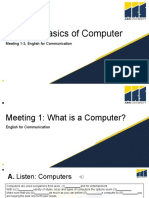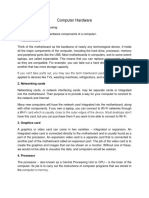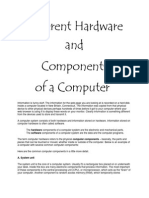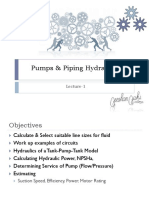0% found this document useful (0 votes)
95 views5 pagesMidterm Exam I. Reading
Computer components include core internal devices that define a computer's capabilities. Nothing affects a computer's quality more than its components. Components must be compatible and research is needed to solve dependencies between components. Certain components like graphics cards can be upgraded to improve performance for tasks like gaming. Key components on the motherboard include the microprocessor, chipset, RAM, and BIOS firmware. Buses connect different parts of the system. Optical drives, hard drives, sound cards, and graphics cards are also considered components. The power supply provides energy but low quality ones can cause issues. The computer case protects components and provides interfaces for peripherals.
Uploaded by
Cao Thuý HườngCopyright
© © All Rights Reserved
We take content rights seriously. If you suspect this is your content, claim it here.
Available Formats
Download as PDF, TXT or read online on Scribd
0% found this document useful (0 votes)
95 views5 pagesMidterm Exam I. Reading
Computer components include core internal devices that define a computer's capabilities. Nothing affects a computer's quality more than its components. Components must be compatible and research is needed to solve dependencies between components. Certain components like graphics cards can be upgraded to improve performance for tasks like gaming. Key components on the motherboard include the microprocessor, chipset, RAM, and BIOS firmware. Buses connect different parts of the system. Optical drives, hard drives, sound cards, and graphics cards are also considered components. The power supply provides energy but low quality ones can cause issues. The computer case protects components and provides interfaces for peripherals.
Uploaded by
Cao Thuý HườngCopyright
© © All Rights Reserved
We take content rights seriously. If you suspect this is your content, claim it here.
Available Formats
Download as PDF, TXT or read online on Scribd
/ 5
























































































